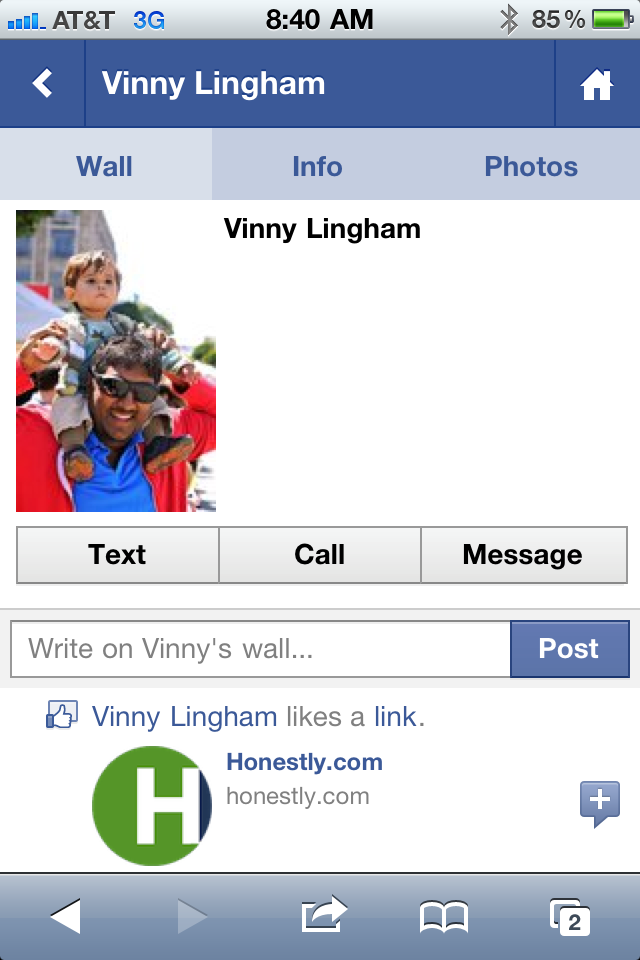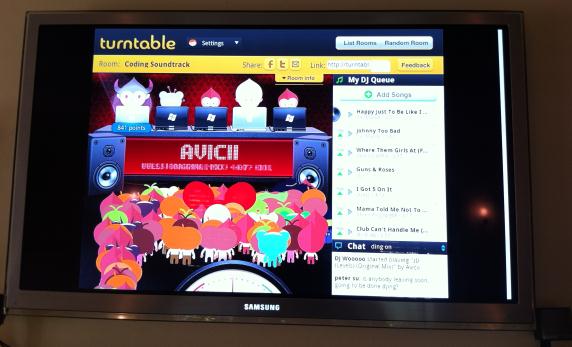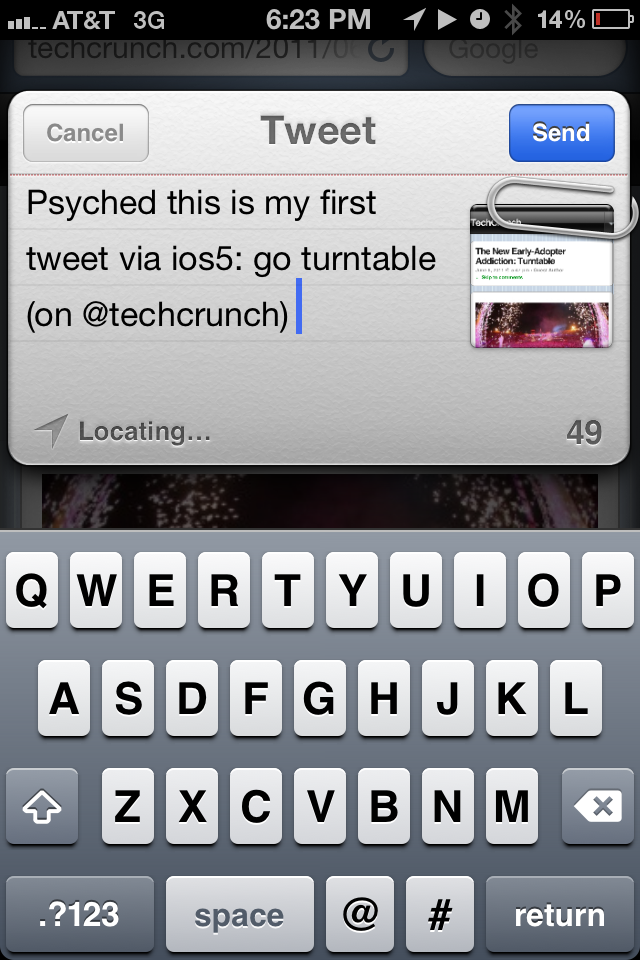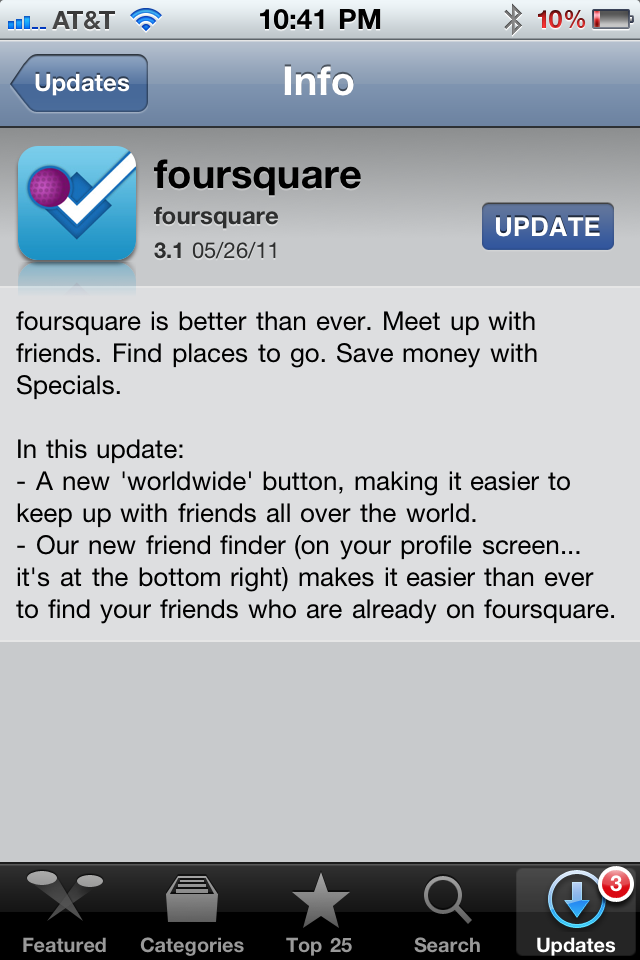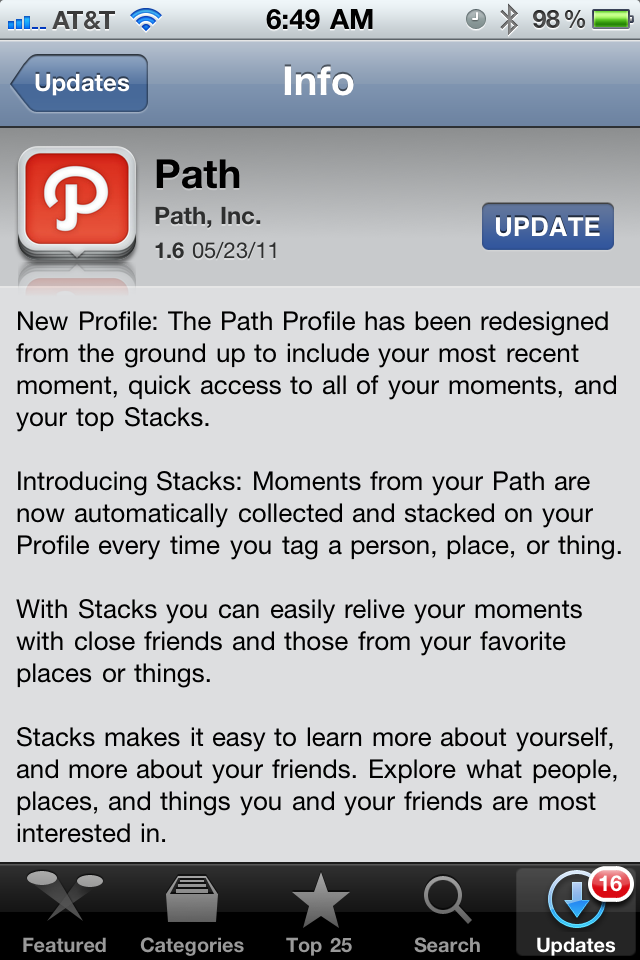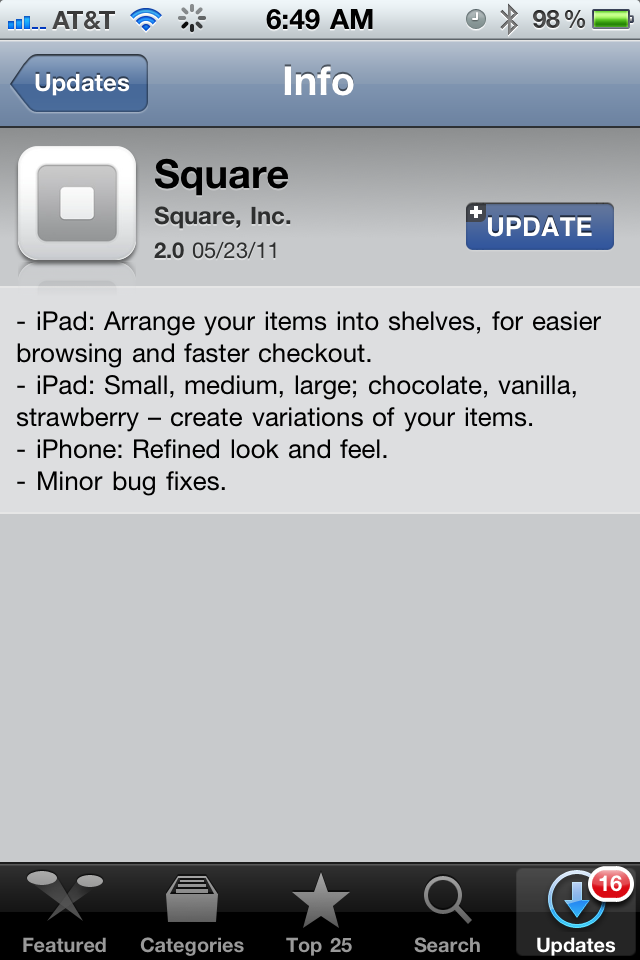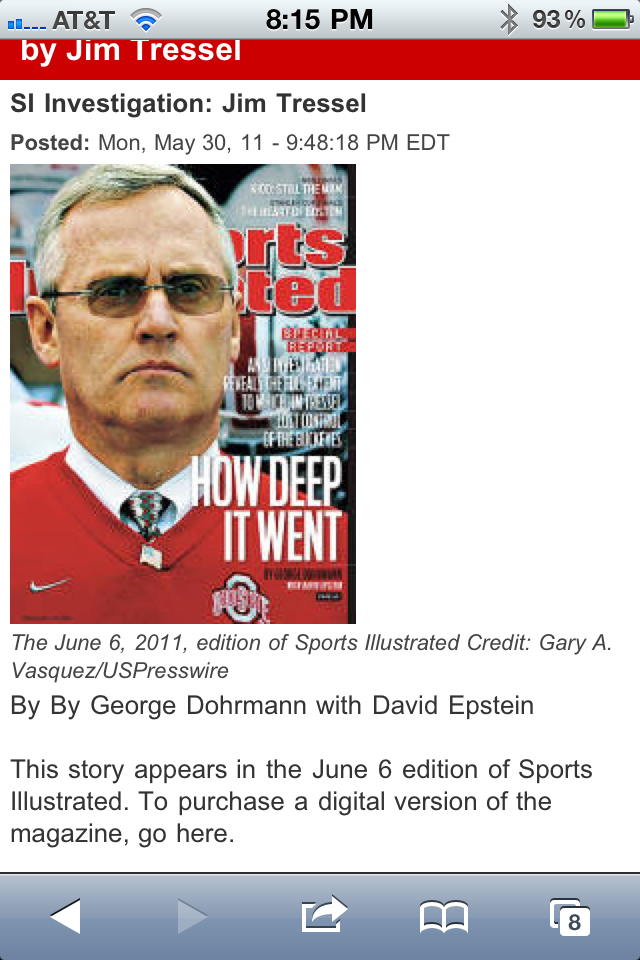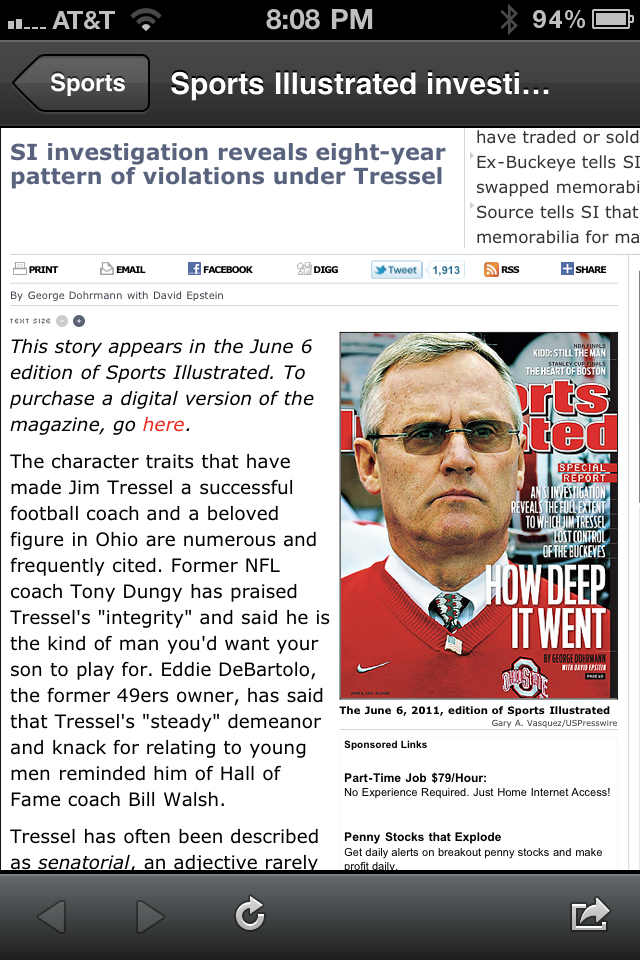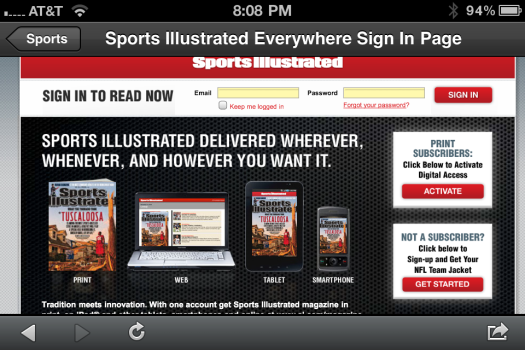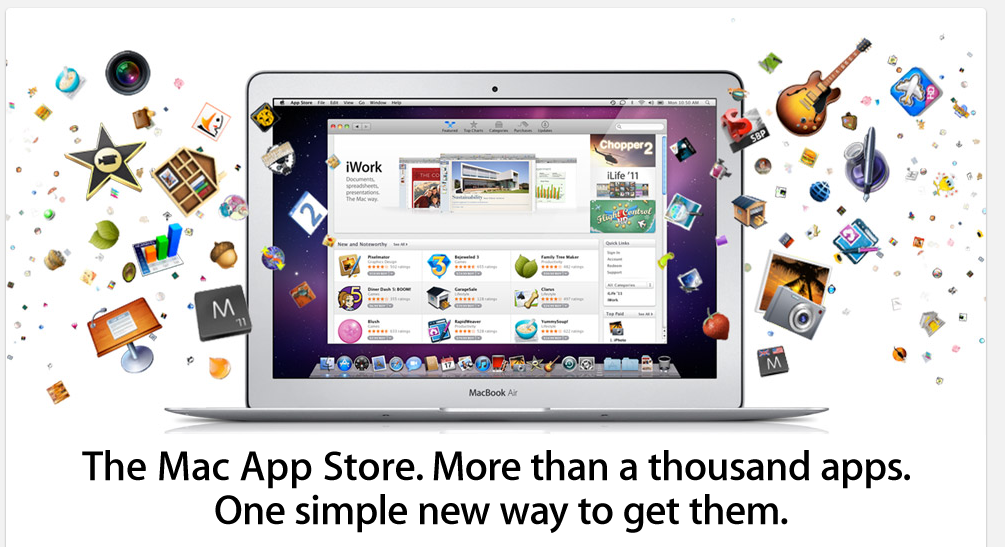The more I play with Apple's iOS5, the more impressed I am with the Twitter integration.And the more aware I am of the potential impact it has on Twitter... But why isn't Facebook integrated instead or along with?
Lots of people have tried to answer this question, but perhaps the below screenshot is a partial reason.
There have been several occasions over the last week that I have misplaced a phone number and turned to the Facebook App to access the contact's number - and place the SMS / call. That's a powerful, threatening concept. And it makes sense: the majority of my contact list is now connected via my Facebook contact group. And those profiles have become complete enough that they usually include an email, phone number, etc.
Surely there is more to the conversation between Apple :: Twitter and Apple :: Facebook, but it fascinating to realize how much of your phone activity can be supplemented - or even replaced - by Facebook.
